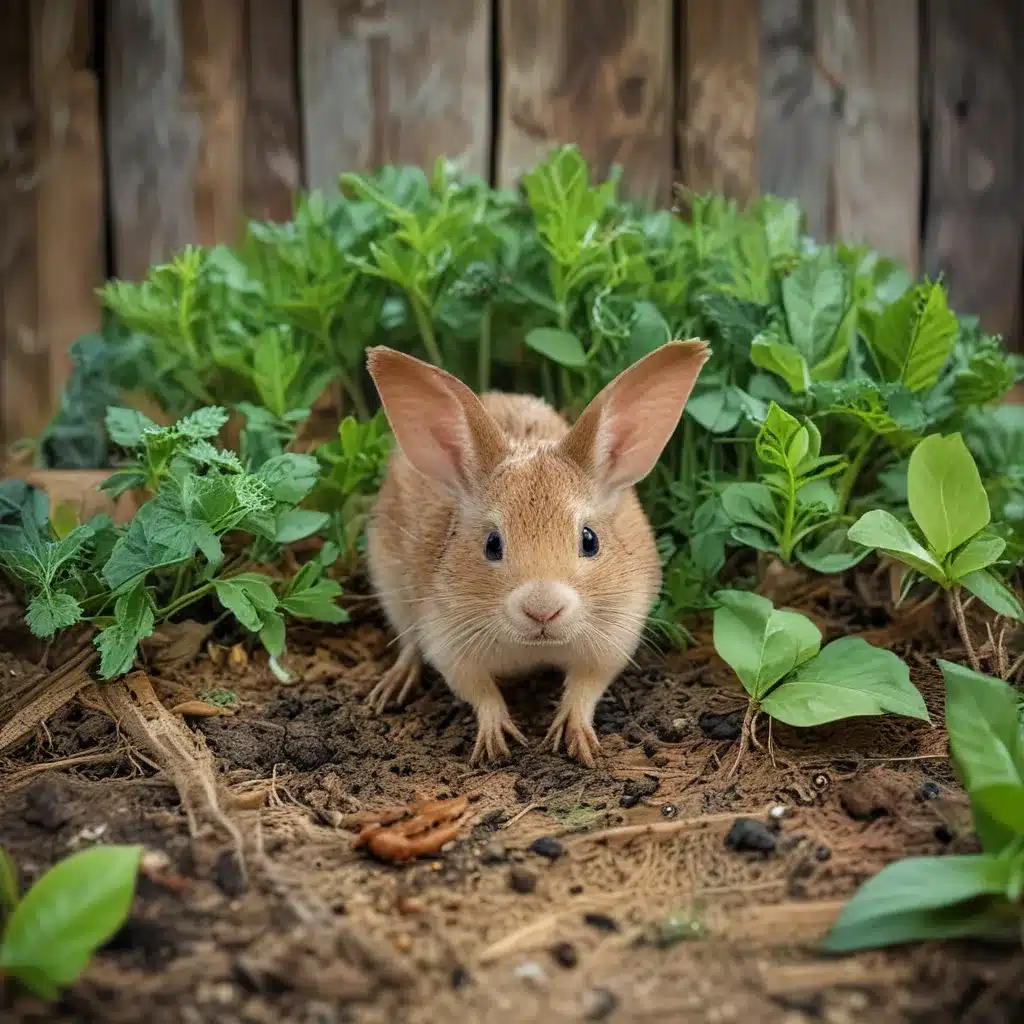
Cultivating a Healthy, Harmonious Garden
I’ve never been one to shy away from a challenge. When my wife Denesse and I set out to start our own community-supported agriculture (CSA) service back in the 80s, we knew it wouldn’t be easy. But with a little determination and a whole lot of elbow grease, we managed to build a thriving, 800-member CSA that served folks right here in our region for over a decade.
Those were the glory days, my friends. We’d spend hours each week researching and writing up detailed newsletters, packed to the brim with recipes, farming tips, and insights into the ever-evolving world of sustainable agriculture. Denesse was the real MVP, adapting each week’s bounty into mouthwatering dishes that introduced our members to all sorts of produce they’d never even heard of before. I, on the other hand, reveled in my “Farther Afield” column – diving deep into the fascinating history and future of food systems.
But amidst all that hard work and community-building, there was one thing that never failed to keep us on our toes: pest control. You see, when you’re growing upwards of 50 different crops on just 75 acres, you tend to attract all kinds of critters looking to get in on the action. Aphids, cutworms, squash bugs – you name it, we’ve dealt with it. And back in those early days, our go-to solutions often involved reaching for the chemical sprays.
The Shift to Ecological Stewardship
Now, don’t get me wrong – I’m no purist. I know that synthetic pesticides can be an effective tool in a pinch. But as time went on, Denesse and I started to have some serious misgivings about relying on those harsh chemicals. We couldn’t help but notice that with each passing season, we were having to apply more and more to get the same results. It was almost like our farm’s natural defenses were slowly being eroded.
That’s when we started digging deeper into the world of organic, ecological farming. And let me tell you, it was a real eye-opener. The research showed that by cultivating a diverse, healthy ecosystem on our land – one teeming with beneficial insects, microbes, and other critters – we could actually harness nature’s own pest control mechanisms. It was a revelation that would forever change the way we approached growing food.
From that point on, Denesse and I became obsessed with all things “organic.” We experimented relentlessly, trying out everything from companion planting to trap cropping to building up our soil’s organic matter. And you know what? It worked. Before long, we found that we were dealing with far fewer pest issues, all while producing some of the most nutrient-dense, flavorful produce we’d ever grown.
Embracing the Power of Natural Solutions
These days, I consider myself a bit of an expert when it comes to eco-friendly pest control. And let me tell you, the options are endless. Take eggshells, for example – who would have thought those little calcium-rich fragments could be such a powerhouse in the garden? We’ve been sprinkling them around our plants for years, and they’ve proven to be an amazing natural pest deterrent.
The sharp edges of the eggshells act as a physical barrier, keeping all sorts of critters from tunneling or munching their way into our crops. Plus, as the shells break down, they release a bounty of essential nutrients like calcium, magnesium, and phosphorus – perfect for promoting healthy, vibrant growth. It’s a win-win!
And that’s just the tip of the iceberg. Over the decades, Denesse and I have experimented with all kinds of natural solutions, from beneficial nematodes to diatomaceous earth to garlic-based sprays. Heck, we even had great success with old-fashioned companion planting, strategically positioning certain flowers and herbs to attract predatory insects that would gobble up our pest problems.
Our friend Tom Willey down at TD Willey Farms has a saying that’s really stuck with me: “We’re not out there battling nature to produce a crop. Rather, we’re stewarding or finessing a natural process, encouraging biological allies who in turn restrain potential enemies.” And you know what? He’s absolutely right. When you start to view your garden as a delicate, interconnected ecosystem, the solutions almost start to reveal themselves.
Fostering a Thriving, Resilient CSA
Of course, implementing these eco-friendly pest control strategies isn’t always a walk in the park. It takes time, patience, and a deep understanding of your land and its unique quirks. But trust me, the payoff is more than worth it. Not only do you end up with a healthier, more vibrant growing environment, but you also get the satisfaction of knowing that you’re doing your part to support a sustainable food system.
And that’s exactly what Denesse and I have been striving for all these years with our CSA. We may have hung up our farming boots, but our mission to nurture a community of food-conscious, health-minded folks lives on. Because at the end of the day, what could be more important than ensuring that the food we eat – and the way it’s grown – nourishes both our bodies and the planet?
So if you’re a fellow CSA member, or perhaps you’re considering joining one, I encourage you to dive headfirst into the world of eco-friendly pest control. Trust me, your vegetables (and your local ecosystem) will thank you. And who knows, you might just find that the journey is as rewarding as the destination. After all, that’s what Thornapple CSA is all about – cultivating a healthier, more harmonious future, one bite at a time.



